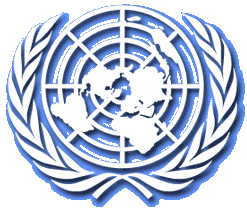News, August , 2007
|
10 million Palestinians, 7 millions of them refugees, 450,000 internally displaced, a new Badil report
Badil report on Palestinian Refugees:“7 million refugees, additional 450.000 internally displaced
Friday September 14, 2007 23:03 by www.badil.org saed at imemc dot org
Bethlehem, occupied Palestine – Twenty-five years since the massacre of Palestinian refugees committed by Lebanese Phalange militias with the complicity of Israel's army controlling the area in the camps of Sabra and Shatila, Palestinian refugees remain without protection and the search for rights-based solutions to their plight.
Palestinian Refugees - 1948
Palestinian refugees and internally displaced persons (IDP) are the largest and longest-standing unresolved case of refugees and displaced persons in the world. In 2006-2007, there were approximately 7 million Palestinian refugees and 450,000 internally displaced Palestinians representing 70 percent of the entire Palestinian population worldwide (10.1 million). The legal status of some 400,000 additional Palestinians is unclear, but they too are likely to be refugees. The forced displacement of Palestinians, both refugee and non-refugees is ongoing in the OPT and Israel as well as in some host countries, in particular in Iraq and Lebanon.
Displacement in 2006-2007 occurred as a result of Israel's war on Lebanon (16,000 refugees displaced), the events surrounding the destruction of Nahr el-Bared camp (31,000 refugees displaced) in Lebanon and the persecution faced by Palestinian refugees in occupied Iraq (over 15,000 refugees displaced). These recent events highlight the lack of protection of Palestinian refugees and the need for rights-based durable solutions.
Right-based solutions are not, however, on the agenda of the international 'peace conference' to be held in November. This conference will likely not address the root causes of the conflict; hence, perpetuating the conditions which have led to the massacres and the forced displacement of Palestinians. In the absence of a search for durable solutions based on their right to reparations, including return and restitution, on the part of much of the international community and the United Nations, Palestinian refugees and internally displaced have ensured their own protection by attempting to effect these rights by themselves.
Detailed findings about the current situation of Palestinian refugees and IDPs can be found in the Badil Survey of Palestinian Refugees and Internally Displaced Persons 2006-2007. The Survey endeavors to address the lack of information or misinformation about Palestinian refugees and internally displaced persons, and to counter political arguments which suggest that the issue of Palestinian refugees and IDPs can be resolved outside the realm of international law and practice applicable to all refugee and displaced populations.
Palestinian refugees and internally displaced persons (IDPs) are one of the largest and longest-standing displaced populations in the world today. Approximately three-quarters of the Palestinian people are displaced.
Displacement and Expulsion
The majority of Palestinian refugees and IDPs were displaced during armed conflict and the first Israeli-Arab war in Palestine. More than 750,000 Palestinians were displaced or expelled between late 1947 and the first half of 1949. Of the roughly 150,000 Palestinians who remained in that part of Palestine that became the state of Israel on 15 May 1948 several tens of thousands were internally displaced.
Approximately 400,000 Palestinians were displaced, half for a second time, during the 1967 Israeli-Arab war. A smaller number of Palestinians were internally displaced during the war, including Palestinians expelled from the Old City of Jerusalem. Subsequent displacement and expulsion of refugees has continued in 1967 occupied Palestine and in various countries of exile. Today it is estimated that three-quarters of the Palestinian people are displaced. More than half are displaced outside the borders of their historic homeland.
Denationalization and Dispossession
The majority of Palestinian refugees are from villages, towns and cities inside 1948 Palestine/Israel. They were denationalized under Israel's 1952 Nationality Law and prevented from returning to their homes of origin. Internally displaced Palestinians became citizens of Israel but were also prevented from returning to their homes. The government of Israel expropriated land and properties belonging to these refugees and IDPs to be held in perpetuity for Jewish use.
The remaining Palestinian refugees and IDPs are from 1967 occupied Palestine. A small number of refugees were permitted to return from Jordan in September 1967 under a process facilitated by the Red Cross. All others were prevented from returning to their homes of origin. Israel considers Palestinians in 1967 occupied Palestine as resident aliens. Israel has expropriated or controls for Jewish use approximately two-thirds of Palestinian owned land in these territories. Before 1948 Palestinians owned more than ninety percent of the land in Palestine. Today they own or have access to only ten percent.
Refugee Rights, Participation and Durable Solutions
More than five decades after their initial displacement/expulsion from their homeland, Palestinian refugees and internally displaced persons remain in forced exile. All refugees and displaced persons have the right to return to their homes and repossess their properties. These rights are affirmed in international law. UN General Assembly Resolution 194(III) and Security Council Resolution 237 reaffirmed these rights for Palestinian refugees and IDPs. Refugee participation in the search for durable solutions strengthens democratic principles and structures, lends greater legitimacy to an agreement, and contributes to its long-term durability.
Israel refuses to allow the refugees displaced in 1948 to return due to their ethnic, national and religious origins. Military occupation of the West Bank, eastern Jerusalem, and the Gaza Strip prevents the return of refugees displaced in 1967 and after. The international community has not exerted sufficient political will to advance durable solutions for Palestinian refugees and IDPs that are consistent with international law and relevant UN resolutions. Refugee rights have therefore been absent from the recent Israeli-Palestinian peacemaking process that began in Madrid in the early 1990s and continues until today. Refugees and IDPs themselves have also been excluded from the search for durable solutions.
---------------------------------------------
- To order the 2006-2007 Survey (10€) please contact admin@badil.org or use the electronic purchase option at www.badil.org
- An electronic copy (pdf format) of the Survey is also available at: www.badil.org/Publications/Books/Books.htm
palestine | refugees/immigration | news report Related Link(s): http://www.badil.org
***
Note to Readers:
The Israeli settlements as well as the Land-Grab, Apartheid Wall in the Palestinian occupied territories have been built illegally on confiscated Palestinian lands. These represent a major violation of international law, Geneva Conventions, and they obstruct reaching a peaceful resolution for the Palestinian-Israeli conflict.
The Israeli occupation forces abduct and kidnap Palestinians from their homes and at checkpoints, on daily basis. Most media refer to these abductions and kidnappings as arrests, which is inaccurate and not true as the Israeli occupation government has no jurisdiction over Palestinian citizens inside their own territories.
Further, when Israeli occupation forces kill Palestinian civilians, particularly when the victims are women and children, this should be referred to as an act of terrorism, and perpetrators should be described as terrorists.
Since the end of the second intifadha in 2005, not a single Israeli civilian was killed by Palestinian resistance organizations. However, Palestinian civilians have been killed by Israeli occupation forces, almost on daily basis.
Note to Journalists:
Any journalist who does not describe this as terrorism is biased, unfair, not objective, and a participant in terrorizing the Palestinian people, so the Israeli occupation of Palestine can continue endlessly.
Note to Translators:
The Arabic definite article, Al (or its variant, El) should be written with a hyphen separating it from the noun it is associated with, for example Al-Aqsa. If a hyphen is not used, as in Al Aqsa, it confuses non-Arabic readers. They may think that it is an abbreviation of the name Albert, as many Americans do.
The Arabic definite article Al (or El) should be written as such, whether it is Shamsiyah or Qamariyah in pronunciation, simply because we are dealing with the written form of the language, not the spoken one. Using the Shamsiyah so many forms in writing is inaccurate and confusing to non-Arabic readers, to say the least.
Only standard (fasih) pronunciation of Arabic names should be used. Non-standard ('ammi) should be avoided avoided. Example: Names like Abu Sunainah, Abu Rudainah, and Abu Shebak are written by some translators in the non-standard forms of Abu Snainah, Abu Rdainah, and Abu Shbak.
The standard pronunciation of the vowel at the end of names is (a), not (e), particularly if it is followed by (h), like in the cases of Haniyah and Rudainah, not Haniyeh and Rudaineh.
The standard pronunciation of vowels in the following names is (ai), not (ei) as written by some translators: Hussain, not Hussein and Hassanain, not Hassanein. This is the same long vowel pronounced in the English words "rain" and "brain."
Fair Use Notice
This site contains copyrighted material the use of which has not always been specifically authorized by the copyright owner. We are making such material available in our efforts to advance understanding of environmental, political, human rights, economic, democracy, scientific, and social justice issues, etc. We believe this constitutes a 'fair use' of any such copyrighted material as provided for in section 107 of the US Copyright Law. In accordance with Title 17 U.S.C. Section 107, the material on this site is distributed without profit to those who have expressed a prior interest in receiving the included information for research and educational purposes. For more information go to: http://www.law.cornell.edu/uscode/17/107.shtml. If you wish to use copyrighted material from this site for purposes of your own that go beyond 'fair use', you must obtain permission from the copyright owner.
|
|
|
|
||
|
||||||


